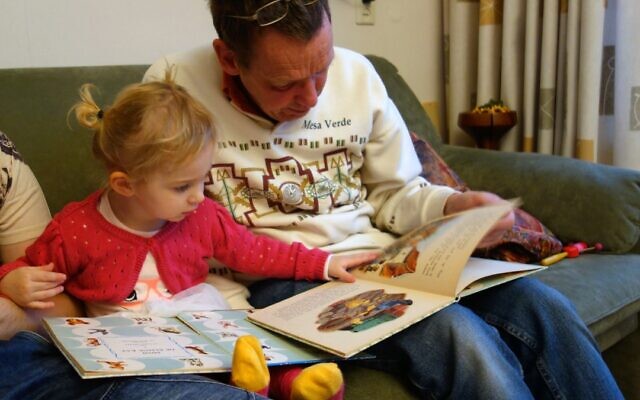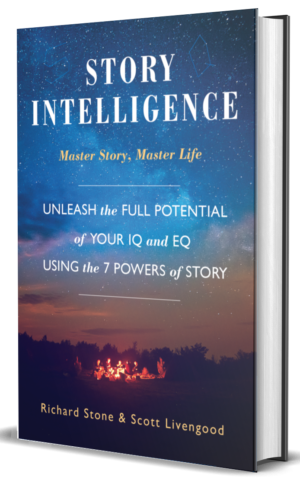Story Intelligence
An emerging concept about the way our brains are wired for story affects how we understand what it means to be human.

“Education is the kindling of a flame, not the filling of a vessel.”
— Socrates
From the beginning of time humans have been telling stories. The evidence spans from cave drawings of hunters and animals to oral traditions retelling events transposed onto scrolls or books. In all its expressions, storytelling formed roadmaps for how people thought and behaved.
Fast forward to the 21st century. Films, photography, TED Talks, YouTube videos, art projects, memoir writing and fictional books are all manifestations of contemporary storytelling. But storytelling is not just about entertainment. Telling our stories and listening to others’ points of view enriches the meaning of our lives.

Using his experience as a writer, artist and storyteller, Richard Stone of Atlanta, along with Scott Livengood of North Carolina, former CEO of Krispy Kreme, developed an emerging concept called story intelligence to explain the multiple ways storytelling impacts our lives. Having met while serving on the board of the Tennessee-based International Storytelling Center, they recently co-authored a new book, “Story Intelligence: Master Story, Master Life,” coming out next month.
The AJT asked those familiar with the concept to explain how stories can reinforce or change one’s beliefs and thinking, as well as how they impact education and business.

“One of the keys to facilitating learning rests in story’s power to evoke new perspectives and insight,” Stone writes in his new book.
Stone, who earned a master of science degree in clinical psychology from Peabody College at Vanderbilt University, further observed that most instructional settings have moved away from narrative approaches to teaching. “Instead, classrooms have become places to train minds and exact conformity and understanding. If we want to fix education, we must return to using storytelling as an integral ingredient in learning environments,” he said.
“This is true because storytelling plays such an integral role in language acquisition and human development. Telling or reading stories to young children such as ‘Where the Wild Things Are’ or ‘The Giving Tree’ enables children’s brains to make important connections.” More importantly, Stone said, children learn their actions have consequences, just as a book’s characters had to make the right decisions to get good outcomes. By seeing how a character in a story postpones gratification, children in turn can learn how to develop impulse-control, he said.
Marshall P. Duke, a professor of psychology at Emory University, referred to story intelligence “as an emerging concept, which may parallel creative and speculative concepts like emotional intelligence or personal intelligence in the spirit of Howard Gardner’s theories about multiple intelligences.” Gardner is a Harvard University psychologist.
In an email to the AJT, Duke emphasized the important role that story intelligence can play in education and how the more that children know about their family stories, the more resilient they appear to be.

“If this finding is corroborated and extended to people of all ages and across different cultures AND if knowledge of family stories can be reframed as story intelligence, then SI will rise to a much higher level of interest and impact,” he stated.
Duke suggested that psychologists take story intelligence seriously, just as other concepts that start out with a proposition such as Stone’s. Self-esteem started out this way and became a major force. Even the term intelligence itself was once just a proposed idea in the early 20th century, he wrote.
Seth Kahan owns a business strategy company, Visionary Leadership, in Bethesda, Md. He worked with Stone in the 1990s to bring business leaders together to learn how to use the “power of story” in organizations.
Kahan emphasized that storytelling is more than a children’s activity. He was introduced to storytelling in the 1980s and has found that teachers, thought leaders and politicians have been using story intelligence for centuries.
“Stories are a primary tool to satisfy our desire to grasp meaning or create it, and to collectively understand our world,” Kahan said. “It’s about time we started using storytelling intentionally and teaching it as an effective communication tool.”
Stone hopes his upcoming book will initiate a conversation around the concept of story intelligence to engage more research and theoretical development around the idea.
“Story Intelligence” will be available on Amazon March 18 with a local book launch on Zoom at 7 p.m. March 29 at A Cappella Books. For more information, visit www.storyintelligence.com.



comments